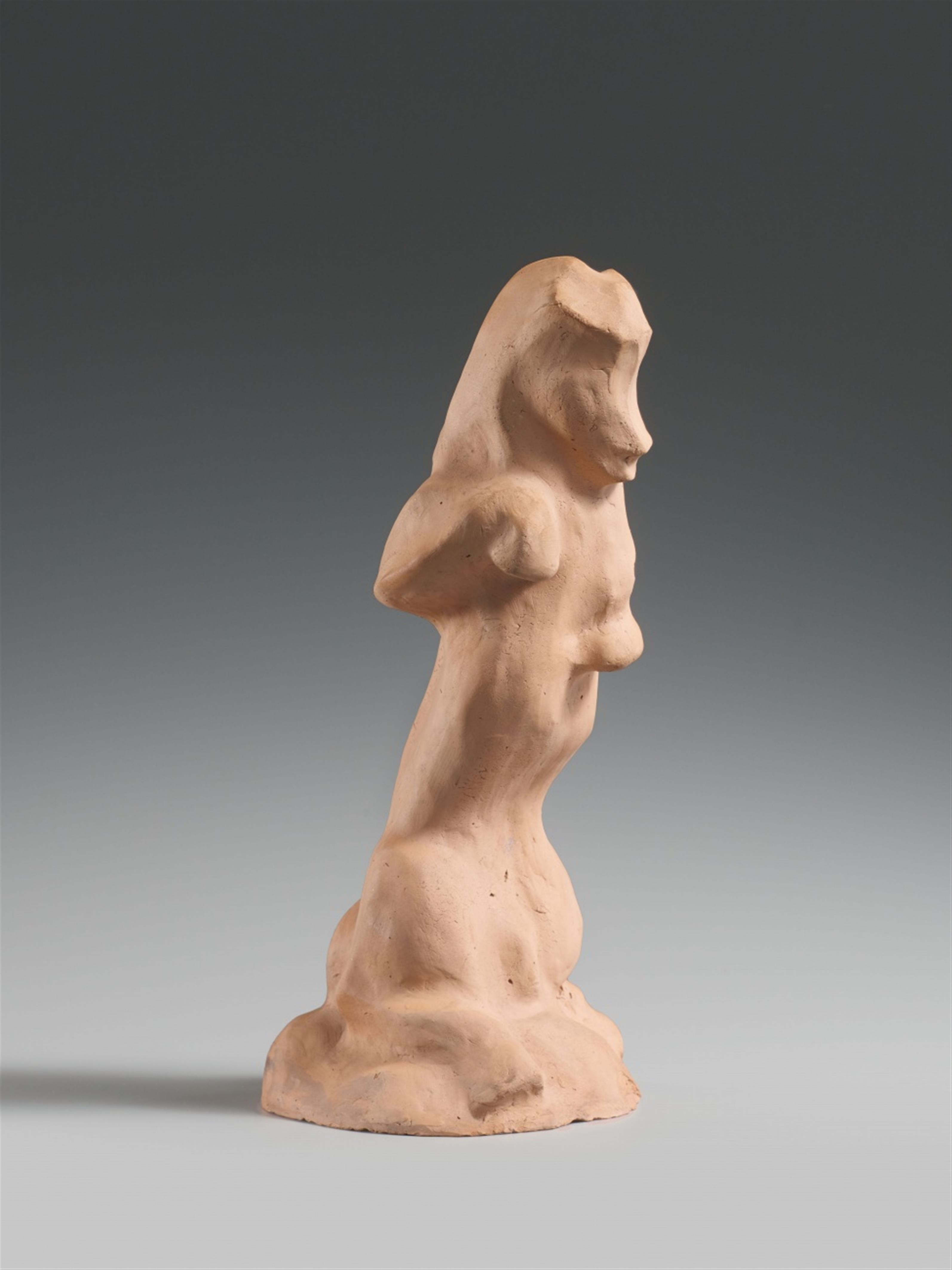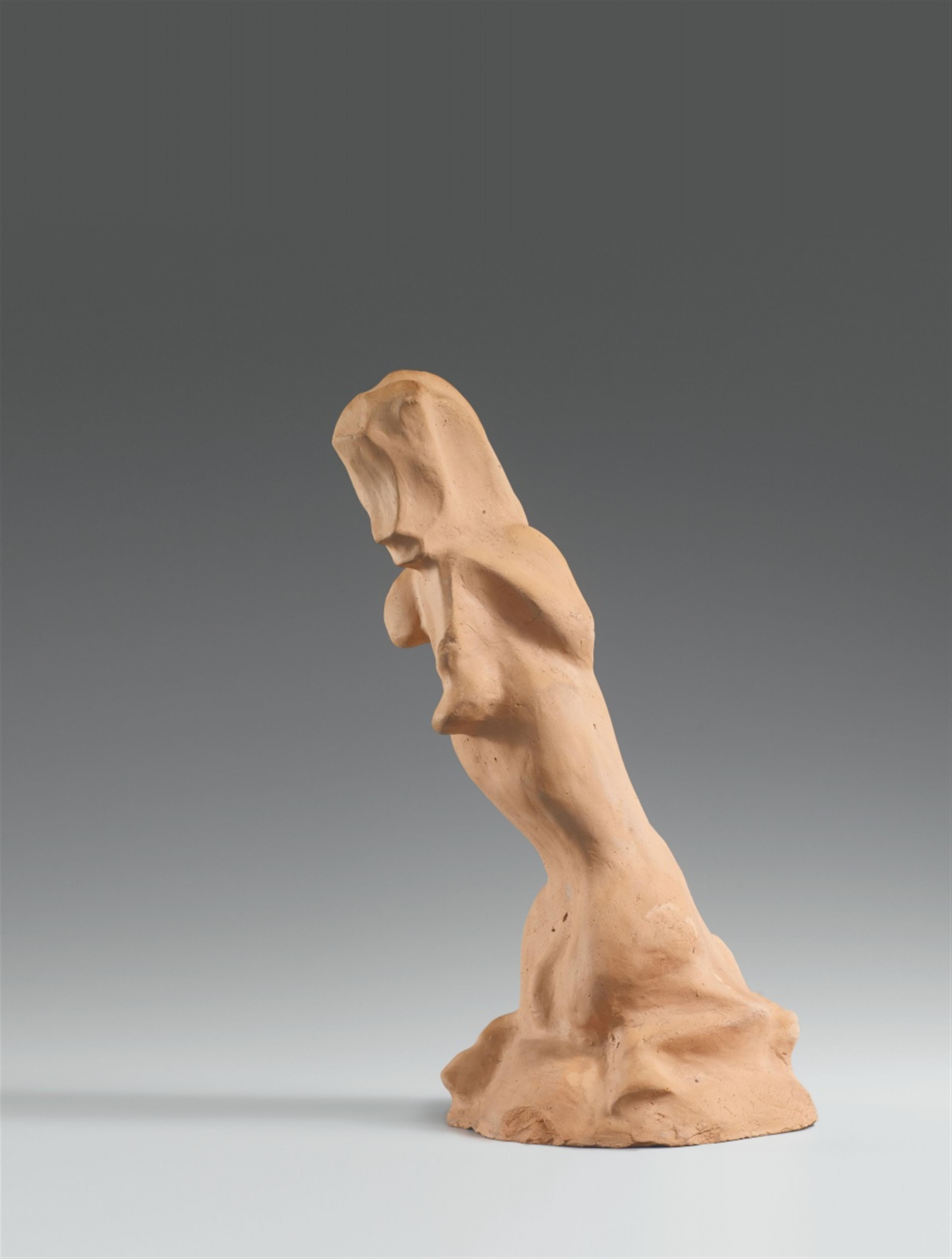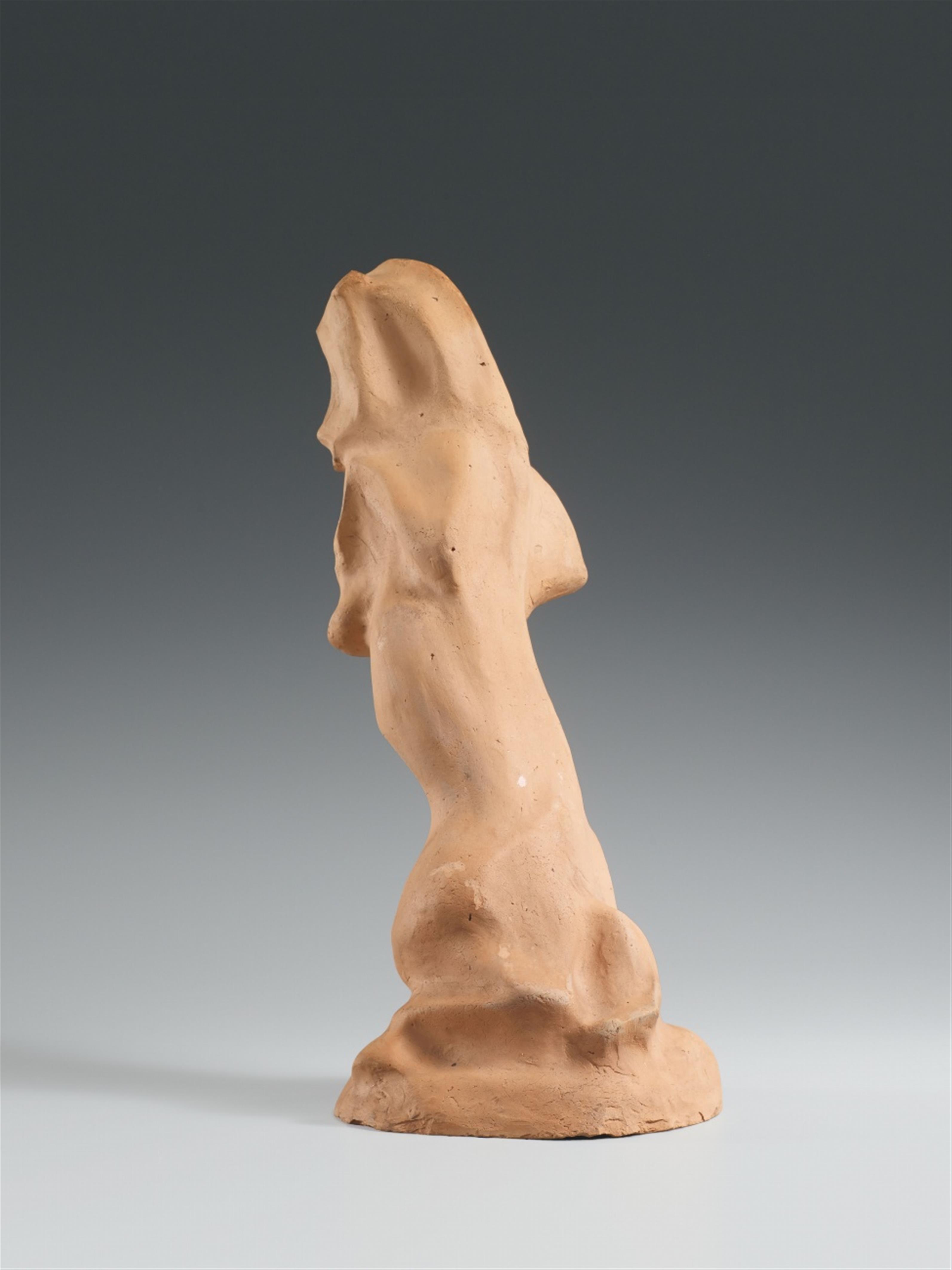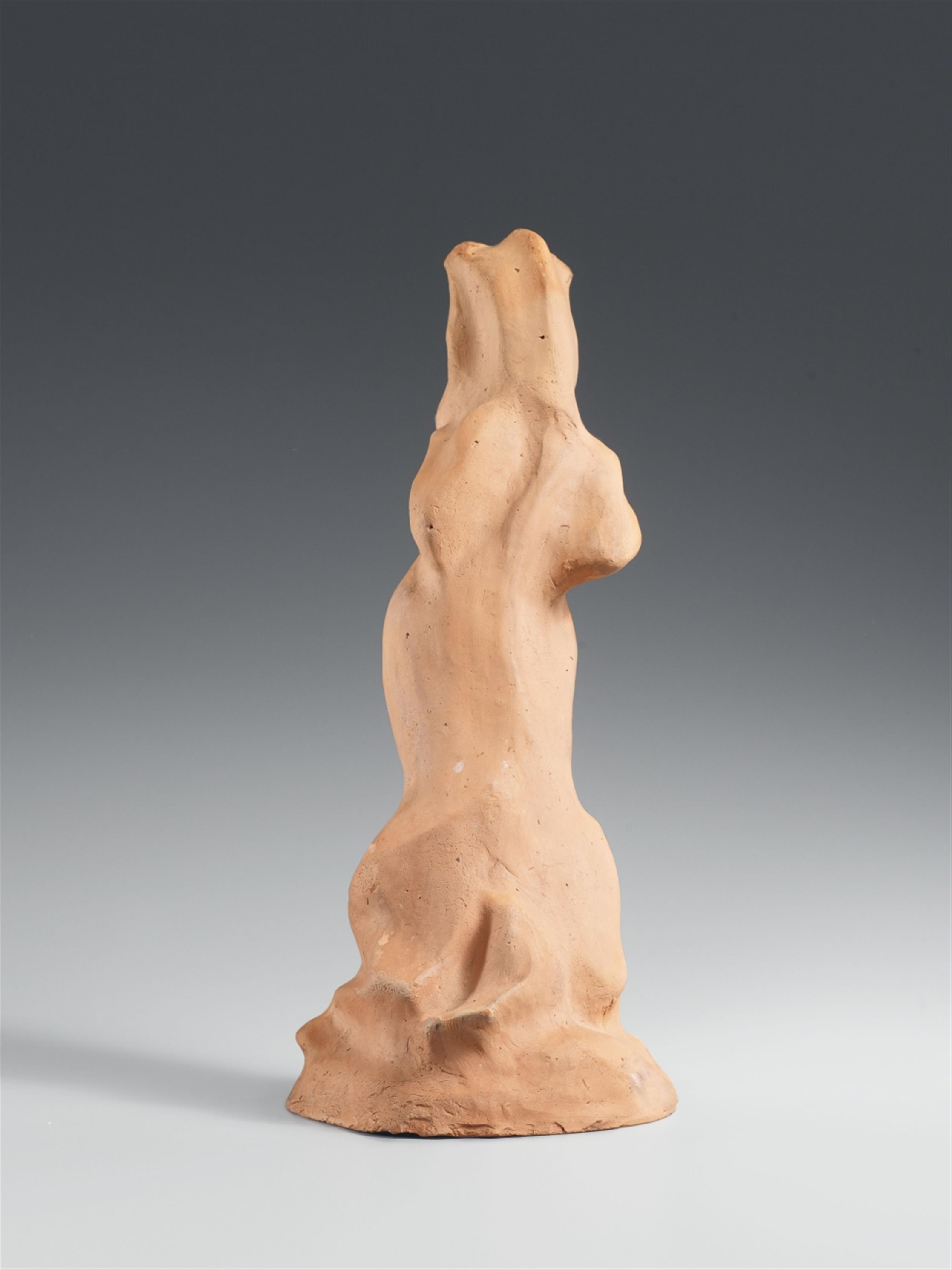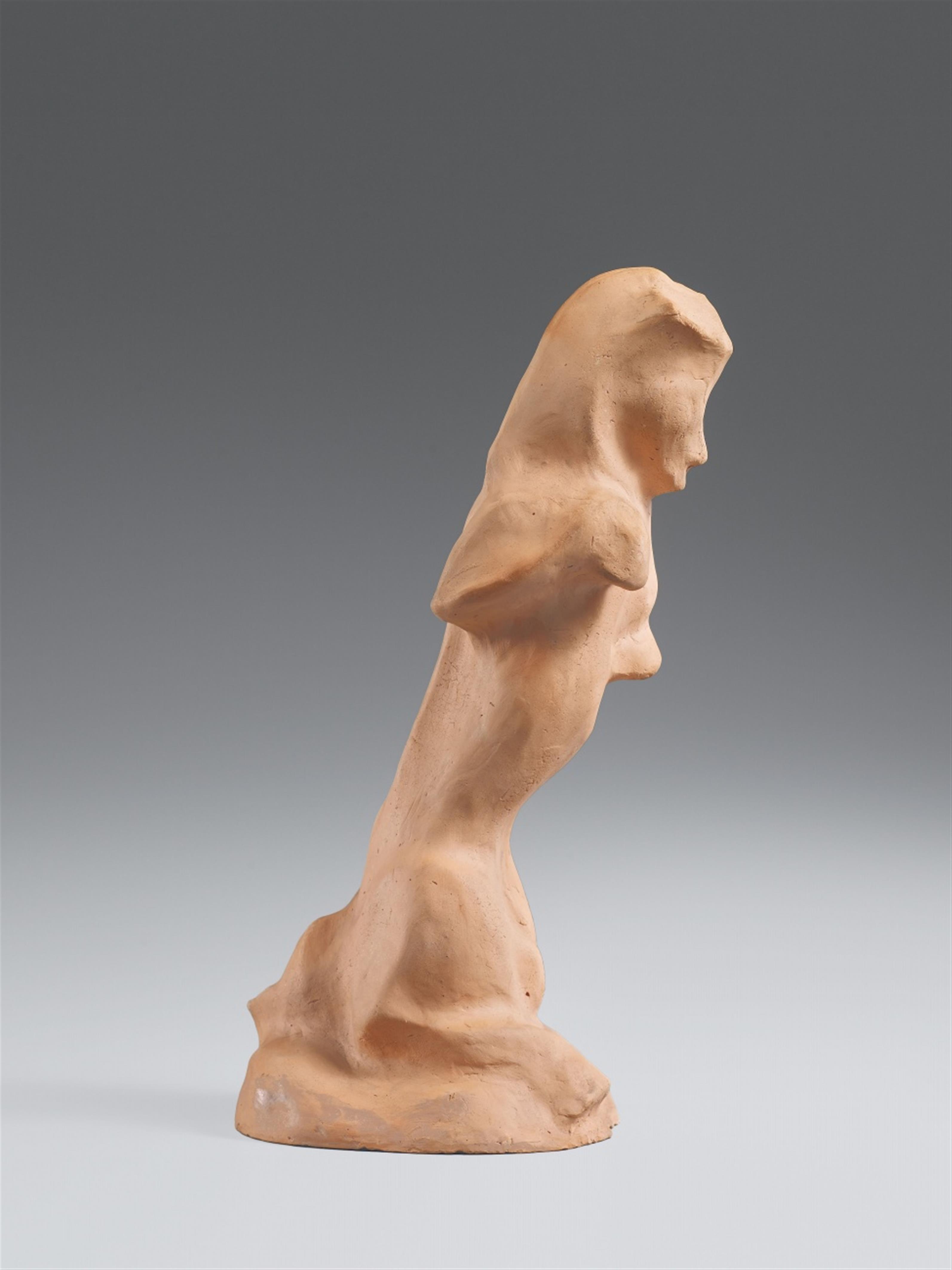Franz Wilhelm Seiwert
Sich im Schmerz aufbäumendes Pferd
Circa 1917/1920
Reddish clay sculpture, burnt Height 28 cm Unsigned. - Minor washed traces of colour. - Slight age-related surface patina. - Some, minor chips, mostly in lower edge area.
Here we have two rare early examples of Franz Wilhelm Seiwert's sculptural oeuvre (see also lot 450), which is much less well-known than his painting. Bohnen already noted how strongly underestimated this part of his work as an artist is: “Of the 64 verified pieces (primarily fired clay sculptures, some wooden objects and a few works in plaster and artificial stone), the whereabouts of 33 are unknown and the majority of these have presumably been destroyed.” (Uli Bohnen, Franz W. Seiwert, Leben und Werk, exhib. cat., Kölner Kunstverein 1978, p. 7). These originally consisted almost exclusively of unique works or small numbers of casts, some of which were photographically documented by the artist himself. The expressively modelled figures may imply familiarity with the Rhenish Romanesque art and medieval sculptural in the broadest sense. In terms of form and content, modern and abstract means of expression also contributed: “Seiwert, Hoerle and Schmitz [...] belonged to the generation that lived through World War I and the revolution in Germany from the very beginning and whose emotional shock corresponded with a deep historical experience; Seiwert's and Hoerle's formal development is rooted in Expressionism, with the hurtful dominating in Hoerle's work and the hurt in Seiwert's” (ibid., p. 9).
C.O. Jatho mentions the “im Schmerz sich aufbäumende Pferd” - “(War, we were certain, is already unacceptable for the sake of the animals!)” - as one of the frequently lost statuettes by Seiwert. In his own time Seiwert had already had casts from the originals fired “in Frechen by a friend who was a master”, but these are scarcely preserved (Carl Oskar Jatho, op. cit., p. 10).
Catalogue Raisonné
Bohnen 358 (this exemplar)
Provenance
Private possession, Cologne
Literature
C.O. Jatho, Franz W. Seiwert, Recklinghausen 1964, p. 10; Wulf Herzogenrath (ed.), Vom Dadamax zum Grüngürtel, exhib. cat. Kölnischer Kunstverein 1975, p. 94 with illus. upper left; Lynette Roth, 1920-33. köln progressiv. seiwert-hoerle-arntz, exhib. cat. Museum Ludwig, Cologne 2008, p. 40, annot. 36, p.128
Exhibitions
Cologne 1975 (Kölnischer Kunstverein), Vom Dadamax zum Grüngürtel; Köln/ Münster/ Berlin/ Ludwigshafen 1978 (Kölnischer Kunstvereien/ Westfälischer Kunstverein/ Kunstamt Kreuzberg Berlin/ Städtische Kunstsammlung Ludwigshafen), Franz W. Seiwert, cat. no. 358 (this exemplar), with illus.

